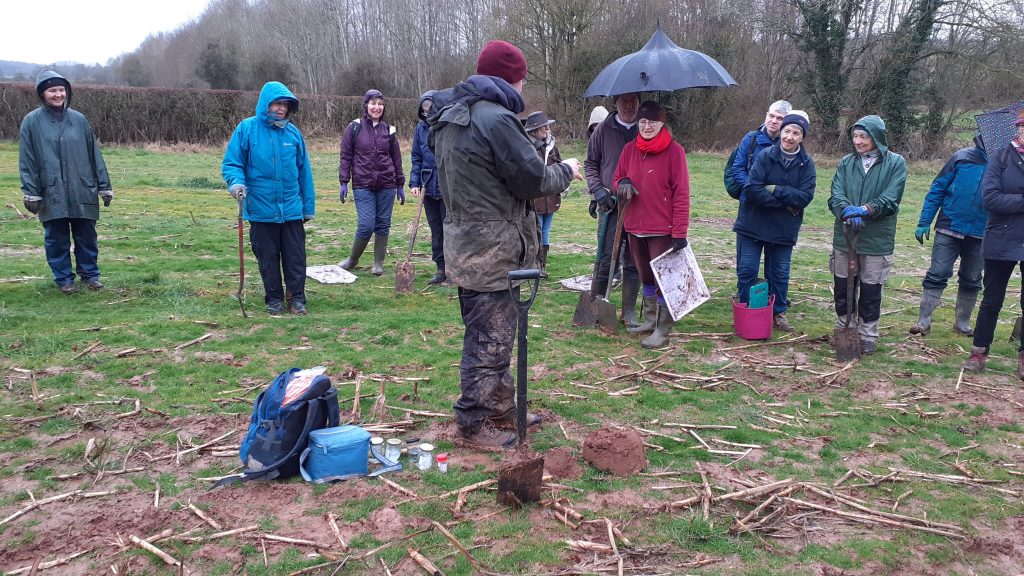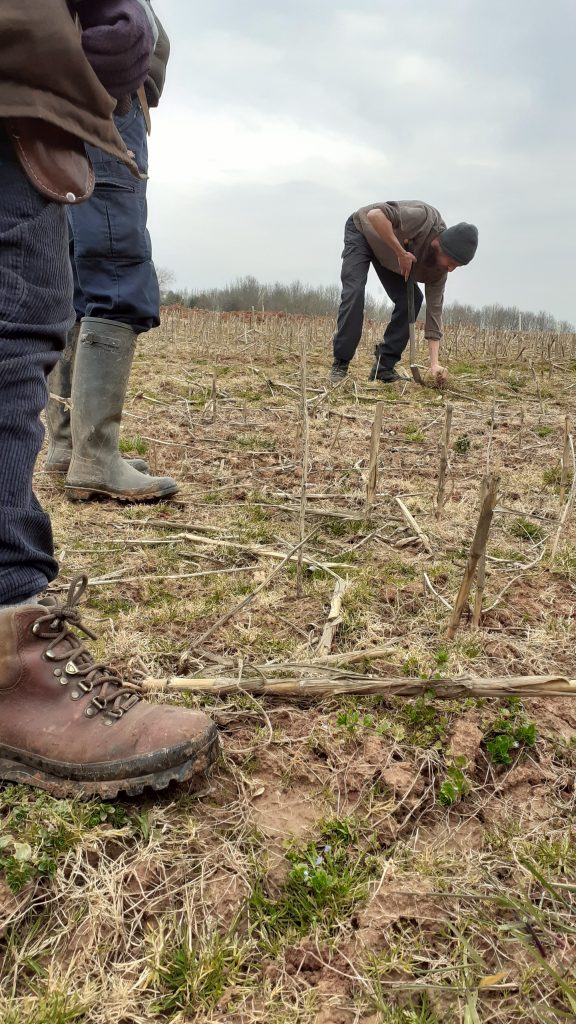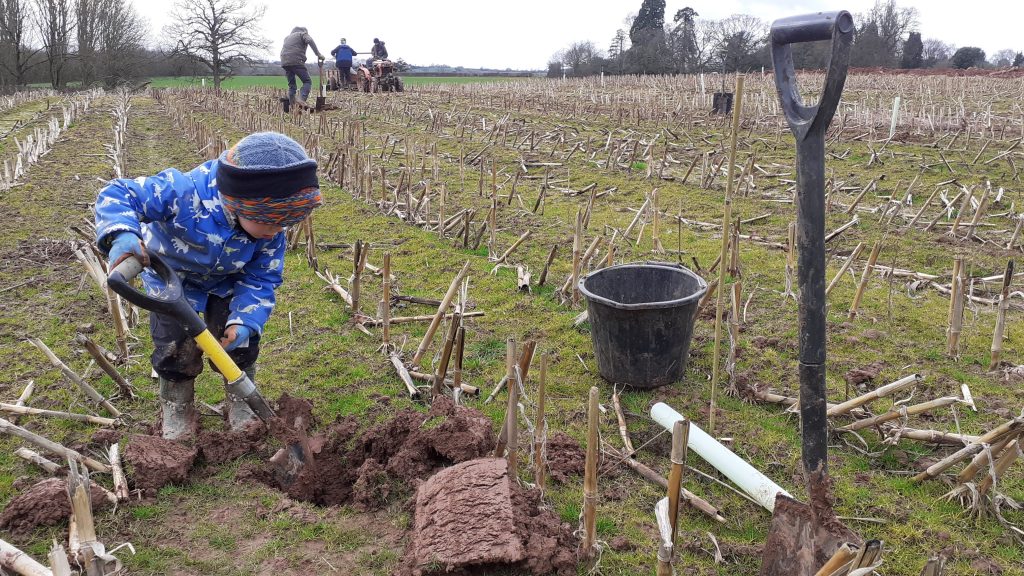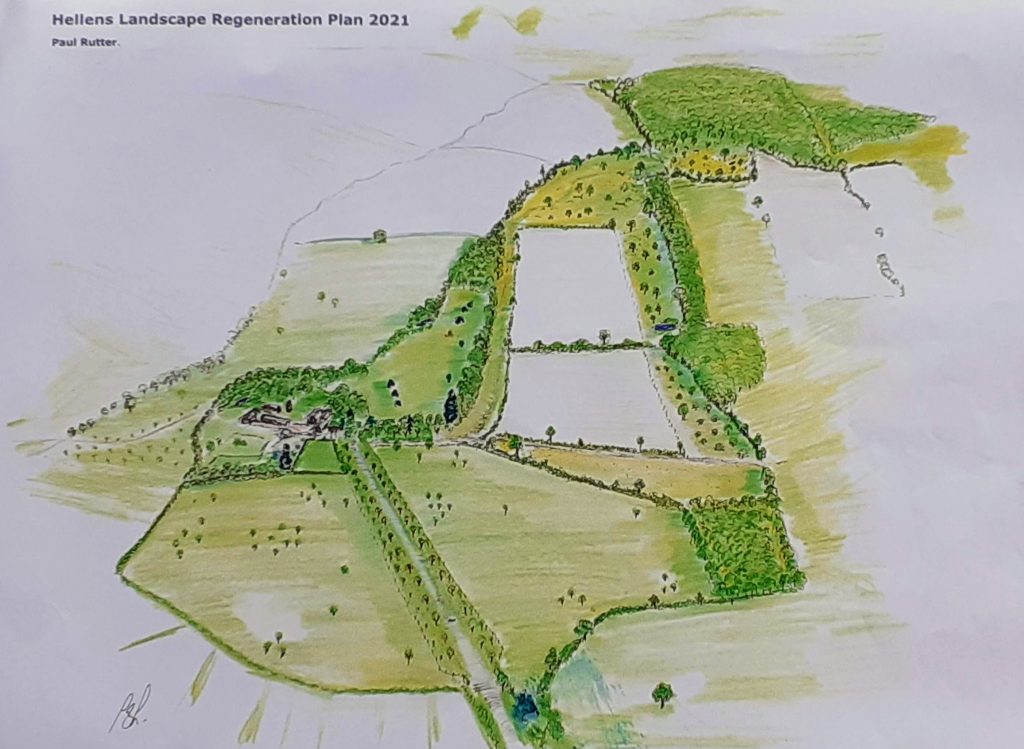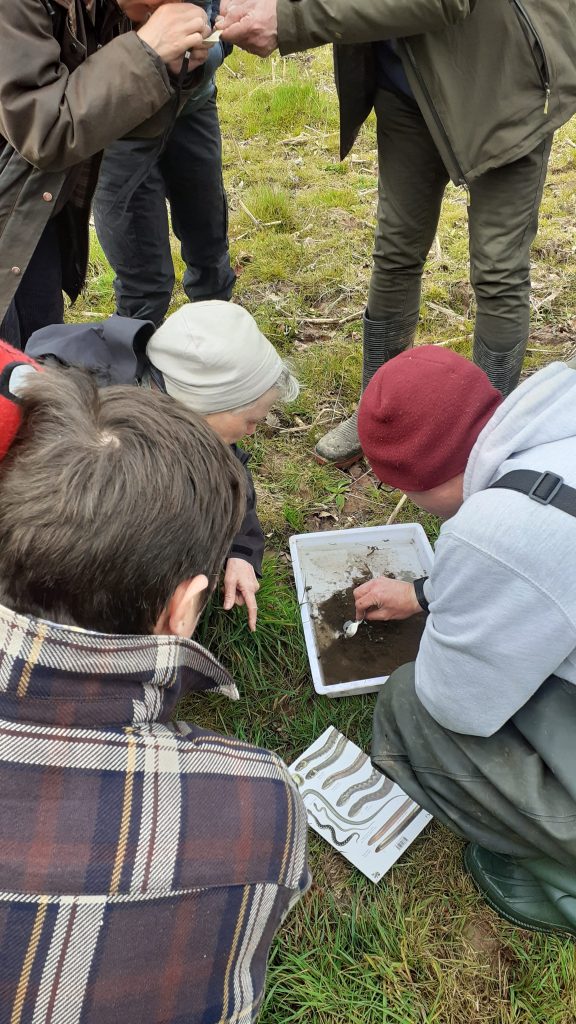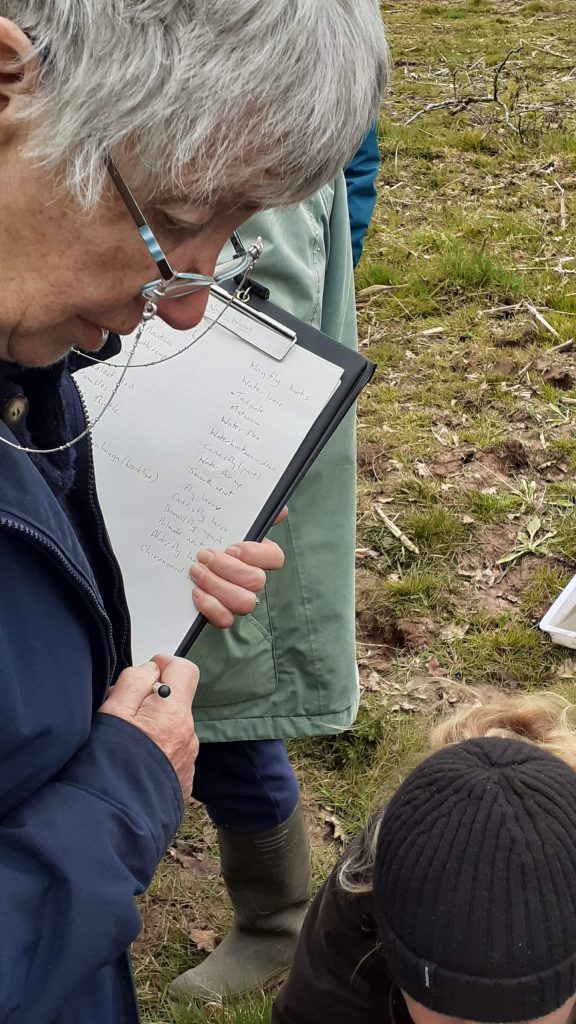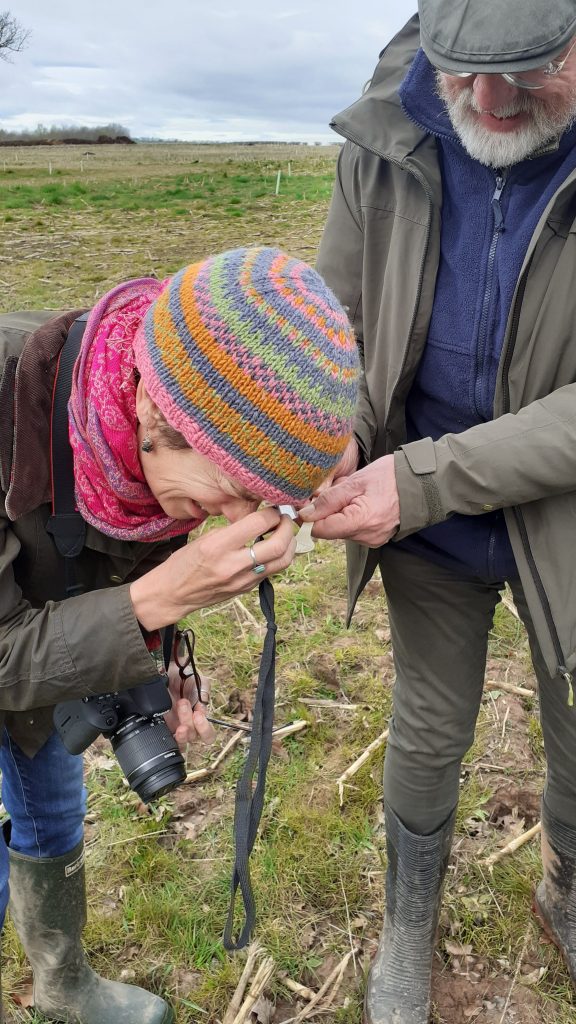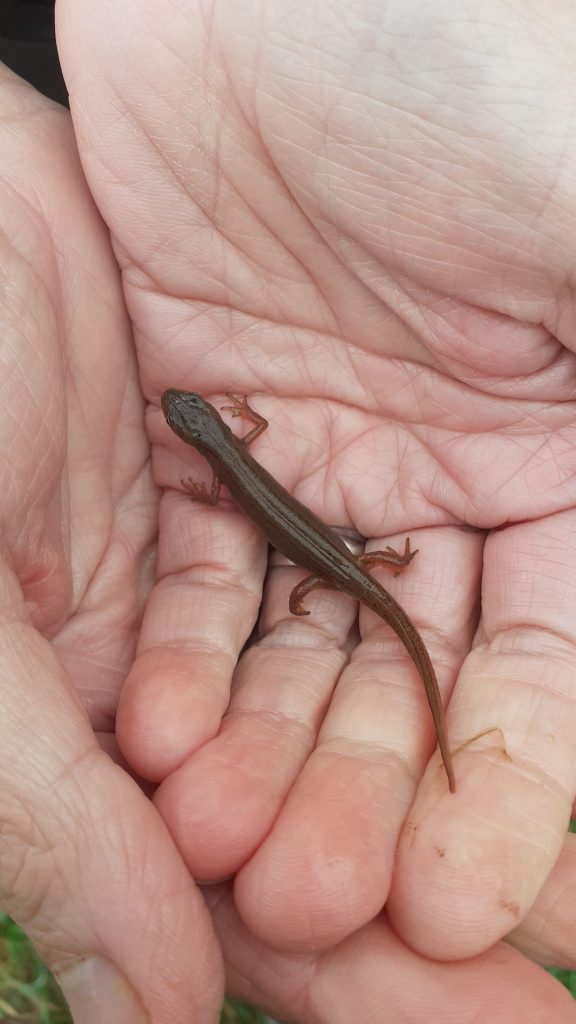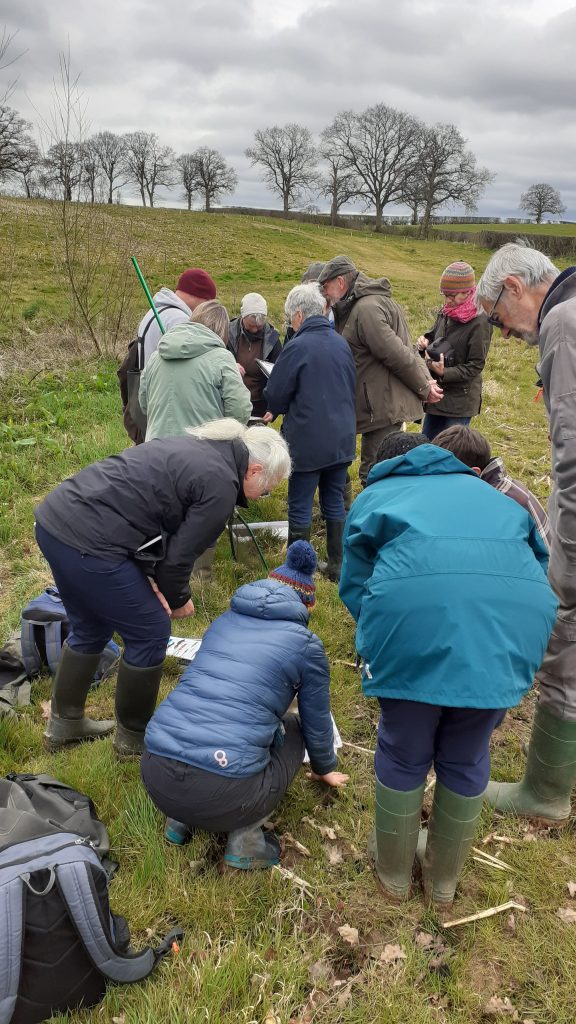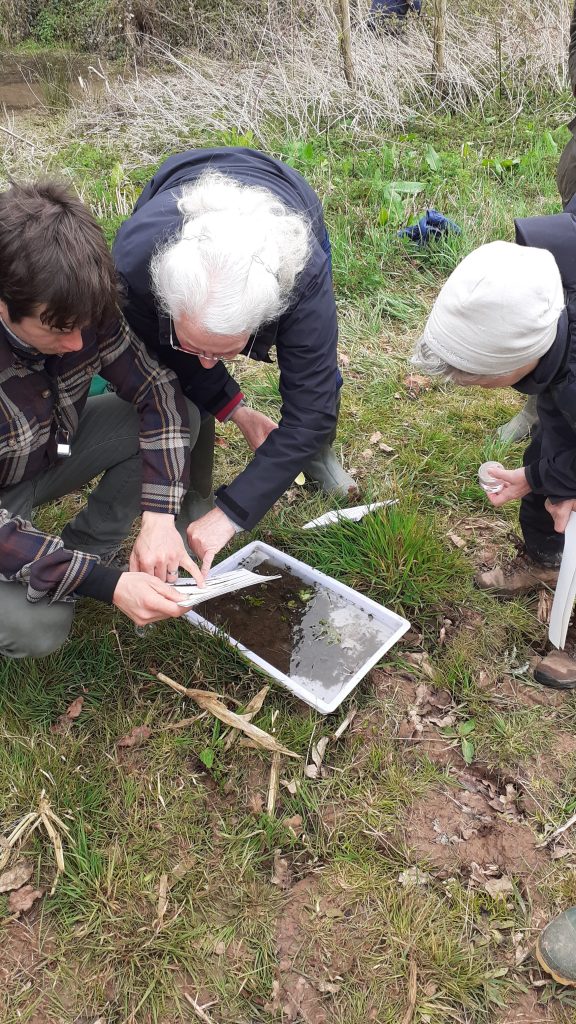Hellens Landscape Regeneration
July 2025
In the interests of soil health, carbon sequestration, minimizing reliance on chemicals, and protecting our water courses – there is now no more ploughing at Hellens!
Agricultural land to the South and South East of the House that had been farmed intensively since being cleared of its old orchards in the 1940s, has now been sown with a permanent grass and wildflower mixture that will hold the soil together with diverse root structures whilst providing grazing for cattle and sheep. These fields are surrounded by the regenerating landscape that we have put so much into over the past few years, ensuring valuable habitat and forage for wildlife, birds and insects, whilst still providing space for food production with our neighbour’s herd of beef cattle. Fencing, gateways and water troughs have recently been installed with the help of grant funding, and this work has completed the major changes to the land on this side of Hellens; although we still have more than a few hedging trees to put in!
Improvements of the sheep pasture North of Hellens towards the main road are also coming along, here we have created two new hedges and have planted many feature trees for the future, including flowering Cherries, our native Oaks and some incredibly rare Black Poplars, along with a selection of old local apple varieties. The intention is to continue this work over the next few years with the establishment of more orchard fruits and plum trees. We have so far achieved roughly a third of the fencing work on this side of the estate, as outlined in the Landscape Regeneration plan created with Paul Rutter, a long standing member of the charity PlantLife and advisor to the National Trust.
The trees at Little Hallwood, outside of the SSSI, were thinned 5 years ago, and the Forest School site fenced to control the access by our neighbour’s cattle. Whilst some of this area is left as regenerating woodland, with young trees rising up through the protective brambles; a larger area is now maintained by mowing at key times of year to ensure the right conditions for the spectacle of spring bulbs and wildflowers that is admired by so many, a succession of Wood Anemones, the local Wild Daffodil and Bluebells from February to May.
The Main body of the woodland has seen another area thinned last autumn, allowing sunlight to reach the woodland floor and providing logs that will be chipped into fuel for the biomass heating system; soon we will be able to finish extracting this timber from the wood and start bringing them up to Hellens. The better logs will be milled for us into materials that are used all across the estate, and the firewood processed as we need it.
Reports are consistently good regarding nature at Hellens, and an increase in pairs of hunting birds staying and nesting here is a good indicator of an increase in our wildlife generally; this is clearly supported by the many areas where flowers are now left to seed and berries to ripen, providing a plentiful food source for so many different species. The fact that this is occurring whilst we are still able to have livestock grazing, producing food and income, is a real success of our project here at Hellens, and hopefully an example that will help to inspire others to alter their farming practises in ways that are more sustainable in the long term; with nature at the forefront.
Local Ornithologist Tom Genders has been making monthly visits to Hellens and starting before dawn has been surveying and recording bird life; from January to June a total of 70 species have been recorded on site at Hellens. The regenerating areas show a number of signs of greatly increased rodent activity, with both voles and shrews observed, and this has led to regular sightings of both kestrel and barn owl. A nesting box for Owls was installed in February to encourage these species to breed on site. We have several breeding pairs of Skylark and Linnet and at least one Greater Whitethroat pair and one Lesser Whitethroat pair. Snipe and Stonechat were observed using the area in Jan and Feb, the former making use of the newly created shallow scrapes and the latter the long grass and scrub.
Hallwood has supported a pair of nesting Lesser Spotted Woodpecker this year, a declining, high concern, red list species, and has also hosted breeding pairs of Marsh Tit, Spotted Flycatcher and Garden Warbler, alongside a host of more common woodland species.
Whilst there are only two official public footpaths across our land, the many permissive routes through Hallwood and around the outer edges of the regeneration farm land are accessible by the public on our regular open days. Visitors are asked to explore carefully and considerately, keeping dogs under close control and respecting the fact that these areas are for nature first. An abundance of wildflowers and bird life can be seen, complementing the traditional farming practises that are so quintessential to our local area. Guidance as to which way to wander can be found by asking in the tea room, open Wednesdays and Sundays from Easter though to October. Kieran Terry 2025.
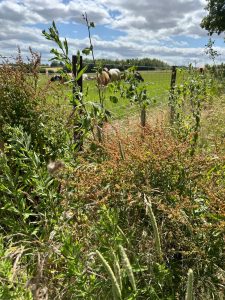
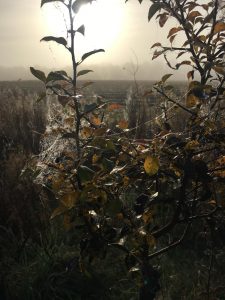
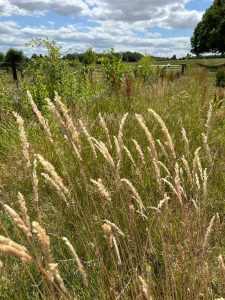
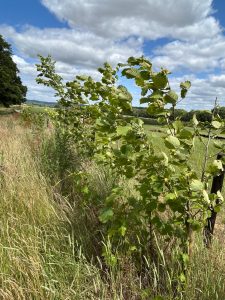
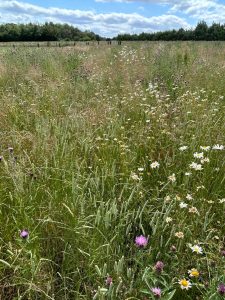

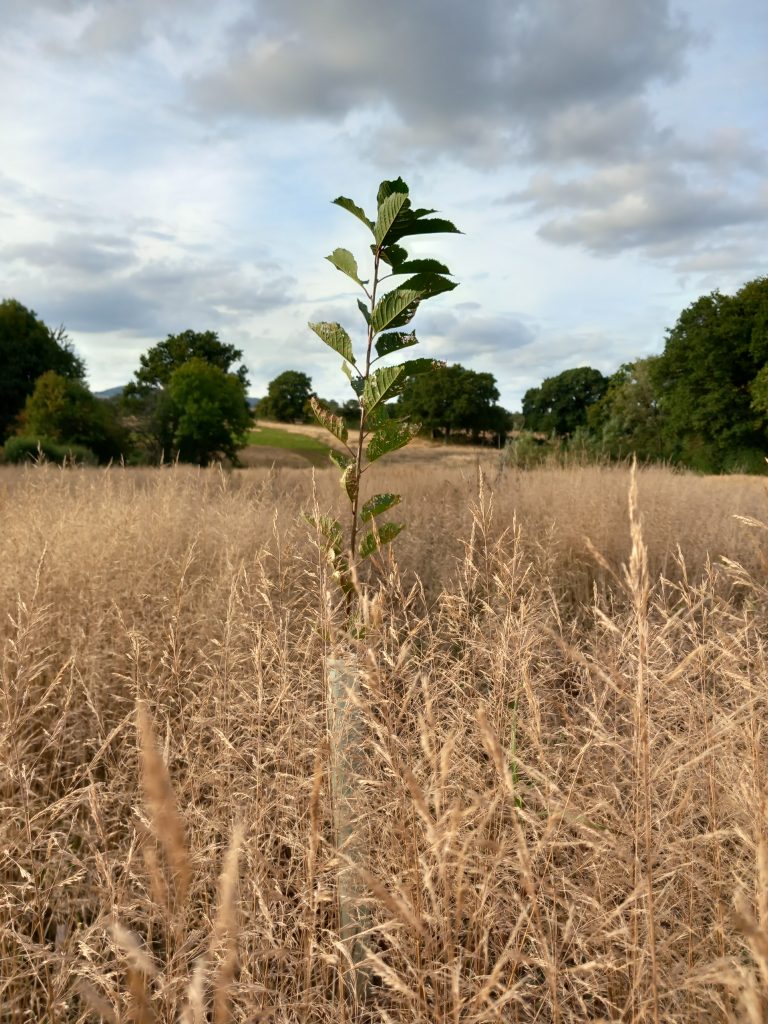
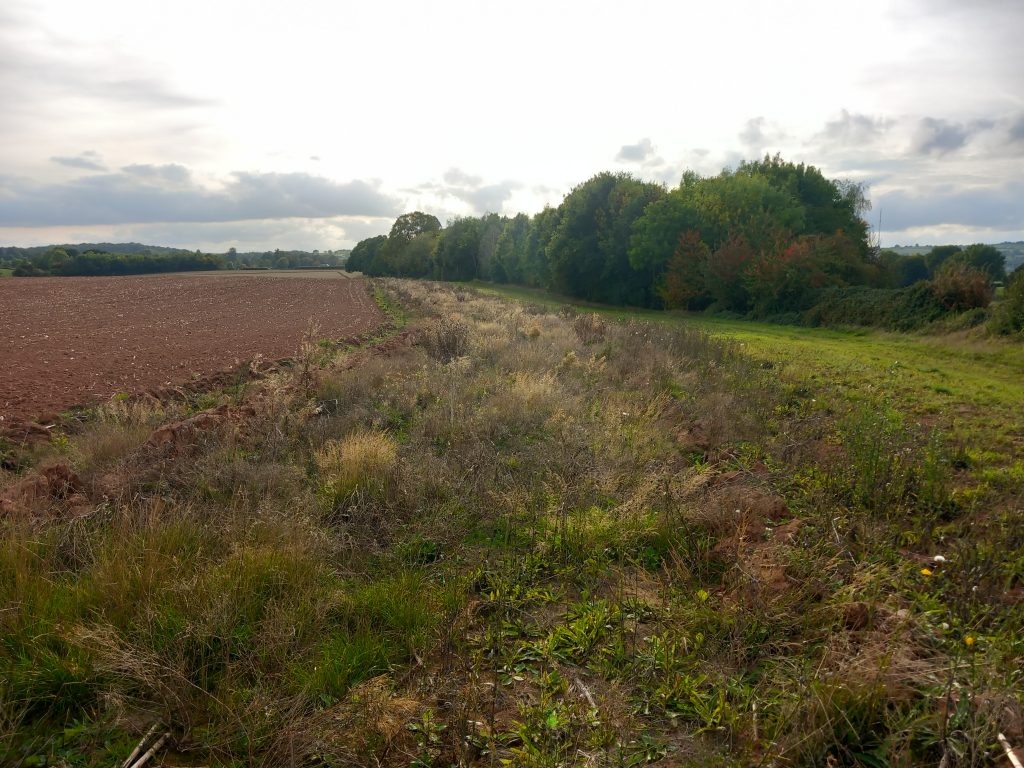
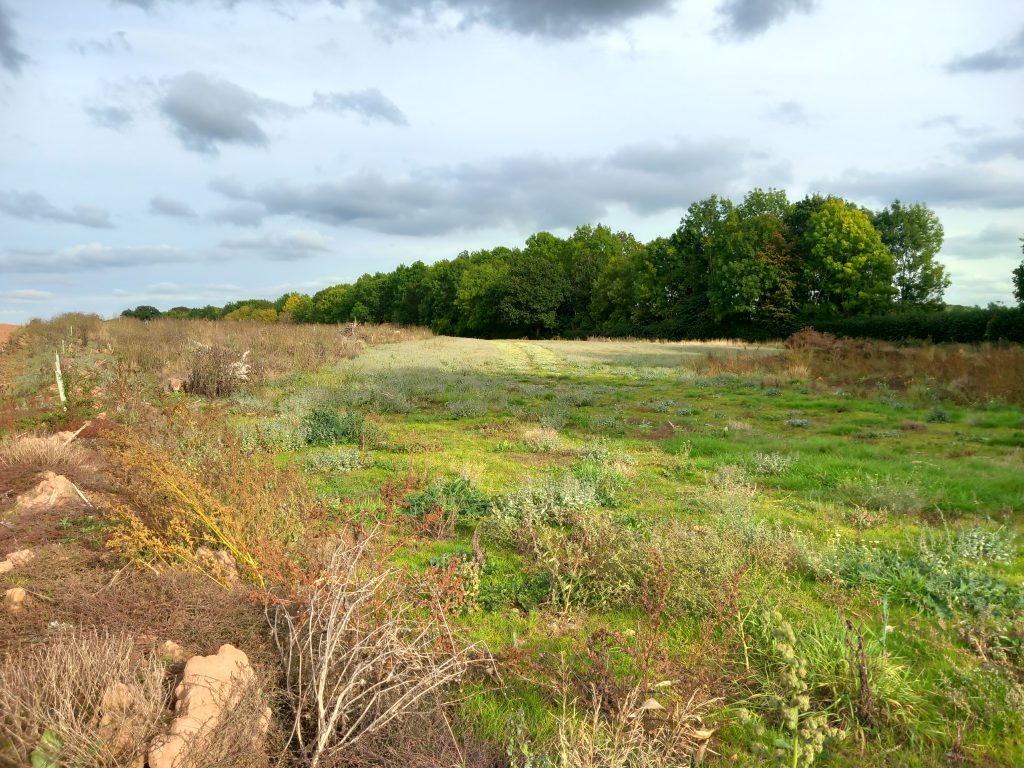
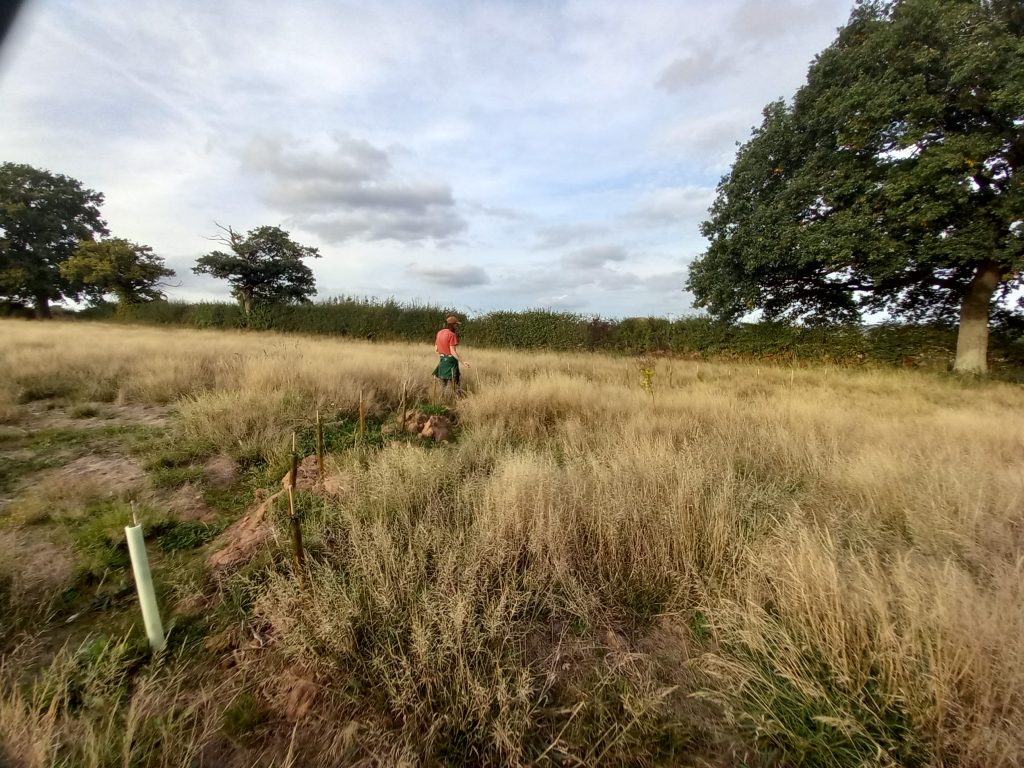
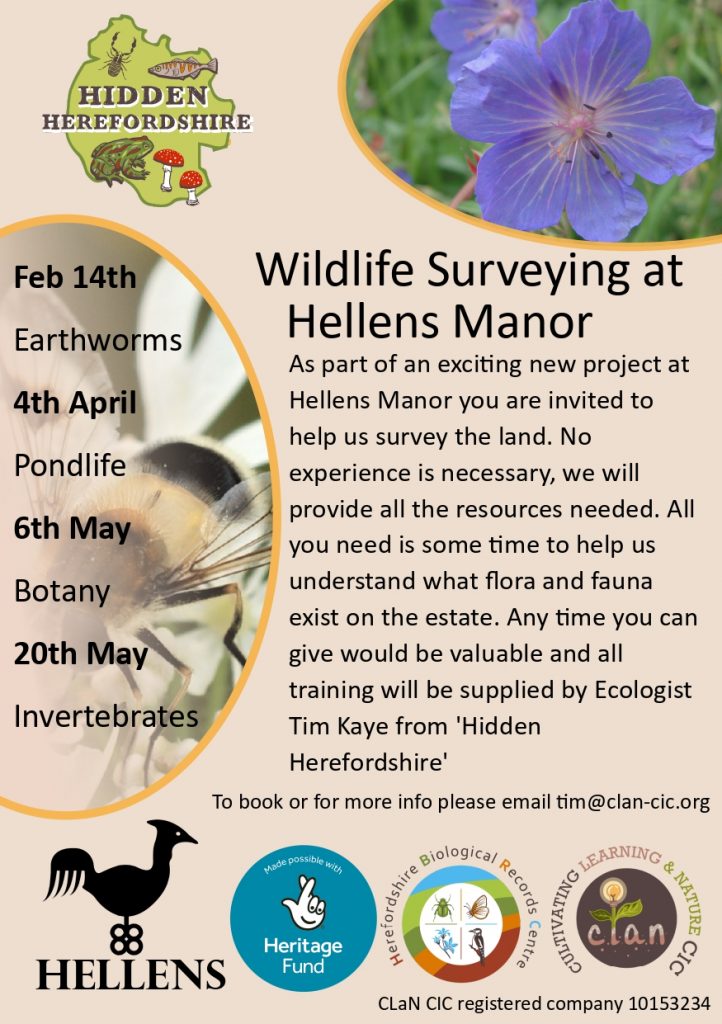 In partnership with Tim Kaye from Cultivating Learning and Nature CIC, we ran a series of survey days during the spring of 2022, working with volunteers to record what species are present at this early stage of the project.
In partnership with Tim Kaye from Cultivating Learning and Nature CIC, we ran a series of survey days during the spring of 2022, working with volunteers to record what species are present at this early stage of the project.